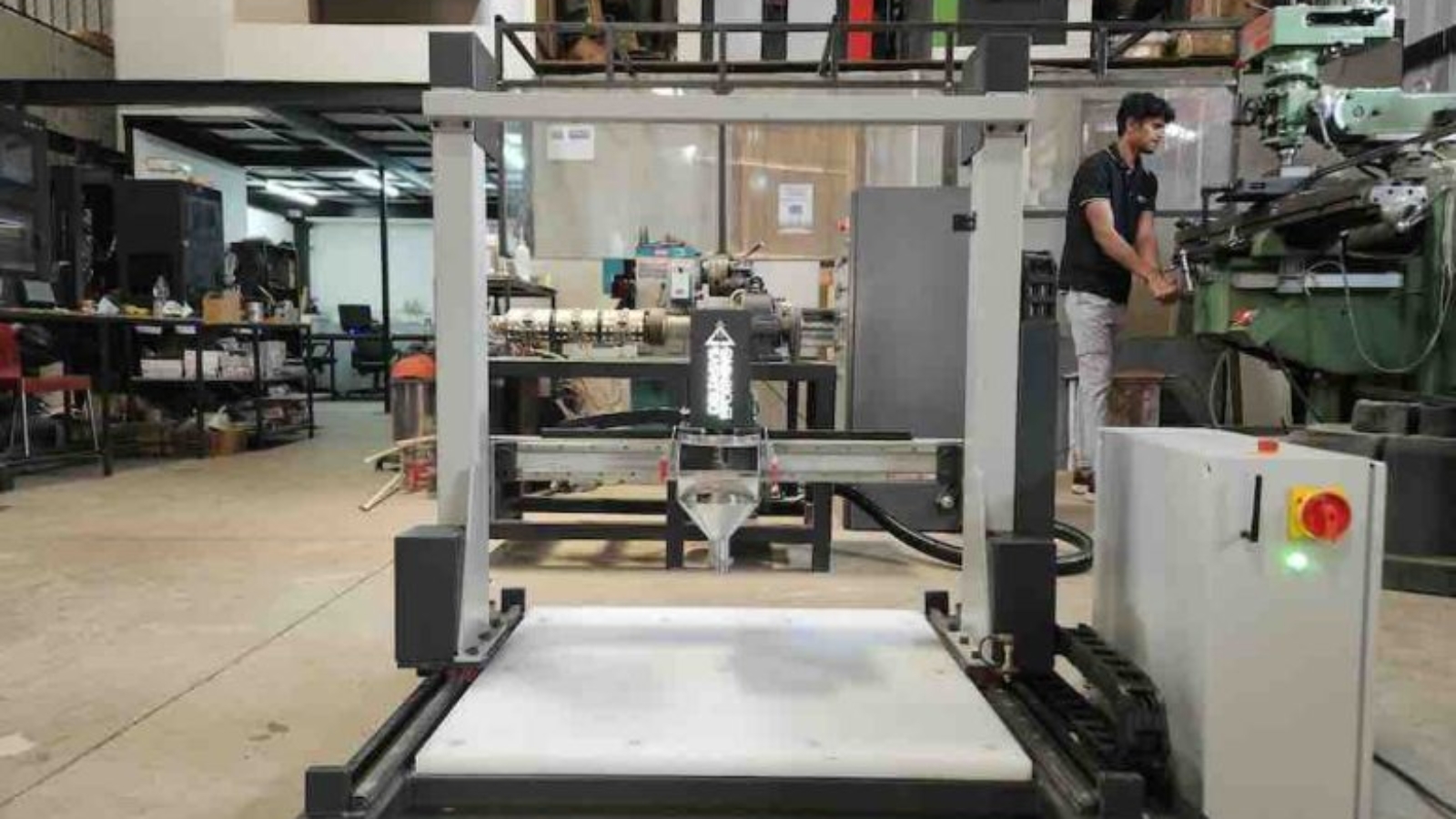When we talk about concrete 3D printing generally, the larger the build volume the better. It makes sense: the technology is typically used for large-scale applications, like printing walls or architectural features, such as the recent 5,000-square foot expansion of a Walmart supercenter. But there are also areas where size is less important and where cost and accessibility are far higher priorities. Such is the case in many R&D labs, particularly when it comes to material development. To meet these needs, Indian 3D printing company Deltasys E-Forming has launched a new tabletop concrete 3D printer.
The compact machine has a build volume of 600 x 600 x 600 mm and is specifically engineered for use in educational institutions and research labs. This means that the system is at once compact enough to fit into a lab, more affordable than industrial concrete 3D printers and offers the necessary capabilities to develop and test industrial-grade materials. According to Deltasys E-Forming, the tabletop 3D printer integrates a material mixer with minimum four blades and a capacity of up to 10 kg of material. The system is also equipped with a robust print head with a high-torque hybrid servo motor and gearbox that enable it to process abrasive aggregated materials.
The combination of the built-in mixer and dosing system will enable research teams to bring concrete 3D printing into their labs for the purpose of developing new materials, experimenting with various properties like concrete rheology, thixotropy, buildability and strength. The types of material the printer can process include concrete, mortar, clay and ceramic pastes with aggregates up to 2 mm in size, as well as composite materials with reinforcing fibers (including steel, PP, glass fiber, carbon fiber).
Manufacturing on Demand
Other notable features of the tabletop concrete 3D printer are a carbon steel gantry structure consisting of CNC machined surfaces for guideway and rack mounting, and a separate control unit with 18-inch interface for process control. The cement 3D printer is also reportedly able to print continuously for up to two weeks. “Our aim was simple: build a lab-friendly Concrete 3D Printer that empowers students and researchers to experiment, innovate and contribute to the future of sustainable construction,” said Virendra Kadam, CEO and Founder of Deltasys E-Forming.
By offering a more accessible platform for experimenting with cementitious materials, Deltasys E-Forming could open the doors for wider materials research in the construction sector. In an industry where sustainable practices and technologies are increasingly urgent—after all, the construction industry alone is responsible for 37% of global emissions—having more people working on finding solutions is key. To date, Deltasys E-Forming’s new machine has been adopted by Southern Illinois University, where a research lab is investigating sustainable construction materials. The company’s larger printer, with a build volume of one square meter, is also being used for research at the Indian Institute of Technology Bombay, where it was installed in 2022.
Along with the new AM hardware, Deltasys E-Forming is providing a suite of support solutions and services to its academic customers, including a one-year warranty on all components (excluding normal wear and tear), thorough operation and working manuals, two-days of on-site training by company engineers and pre-delivery testing using compatible materials. Ultimately, the compact concrete 3D printer provides an accessible solution that could drive innovation in construction 3D printing and thus impact the broader construction industry.
You might also like:
30 meters tall, 3D printed Tor Alva unveiled in the Swiss Alps: Developed through the powerful collaboration between the Nova Fundaziun Origen and ETH Zurich—along with a constellation of local, national, and international partners—the White Tower embodies the perfect blend of tradition and innovation. The initiative reaches far beyond architecture, forging a deep connection between history, community, and cutting-edge digital fabrication technologies.
* This article is reprinted from 3D Printing Media Network. If you are involved in infringement, please contact us to delete it.
Author: Tess Boissonneault



Leave A Comment